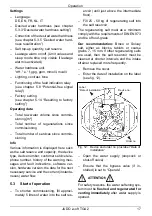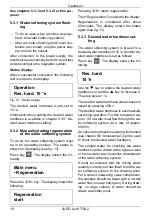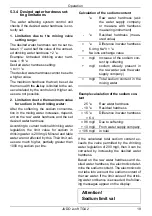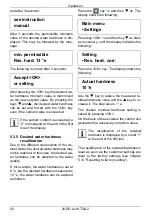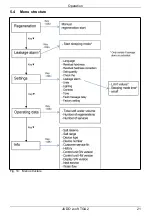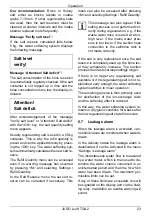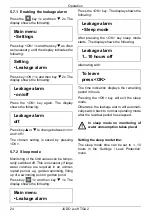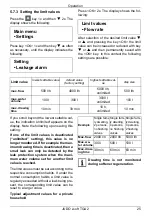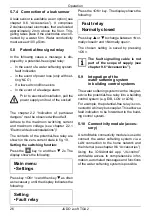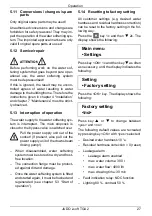
JUDO i-soft TGA 2
13
Installation
– Fully tighten the four M6×25 hexagon
socket head screws.
The hand wheel of the bypass valve can ei-
ther project vertically upwards or to the side.
Installation should be performed so that, de-
pendent on the local circumstances, the
hand wheel can be easily accessed.
4.6
Water softening system instal-
lation at the already installed
bypass valve
The connection flange of the water softening
system is covered by a white protective cap.
This protective cap is secured using four
hexagon socket head screws M6×130.
ATTENTION
After removing the white protective cap do
not reach into the device connection flange
(risk of crushing)!
– Loosen all four hexagon socket head
screws M6×130, but do not screw out
completely (bayonet connection)!
– Remove the white protective cap.
The profile of the profile flange seal must
point towards the bypass valve. If this is not
observed, water leaks may occur This can
result in water damage to the building, fur-
nishings and equipment.
– Raise the water softening system and
swivel approximately 30° in an anti-
clockwise direction.
– Position the water softening system on
the “G”-labelled flange of the bypass
valve so that the screw heads project
through the bayonet holes (see fig. 7 I).
– Swivel the water softening system back
approximately 30° in a clockwise direc-
tion.
– Fully tighten the four M6×130 hexagon
socket head screws (see fig. 7 II).
After installation of the water softening sys-
tem, screw out the wall support until it touch-
es the cladding of the water softening sys-
tem and the device hangs vertically on the
wall.
Select the tightening torque (about 4
Nm) so that the seal works effective-
ly!
Abb. 8: Bypass valve (JQX)
Rotary flange fitting
Handwheel
Device-side flange (“G”)
Pipe-side flange
(“R”)
Select the tightening torque (about
4 Nm) so that the seal is effective
and the water softening system is
not damaged or strained!

















